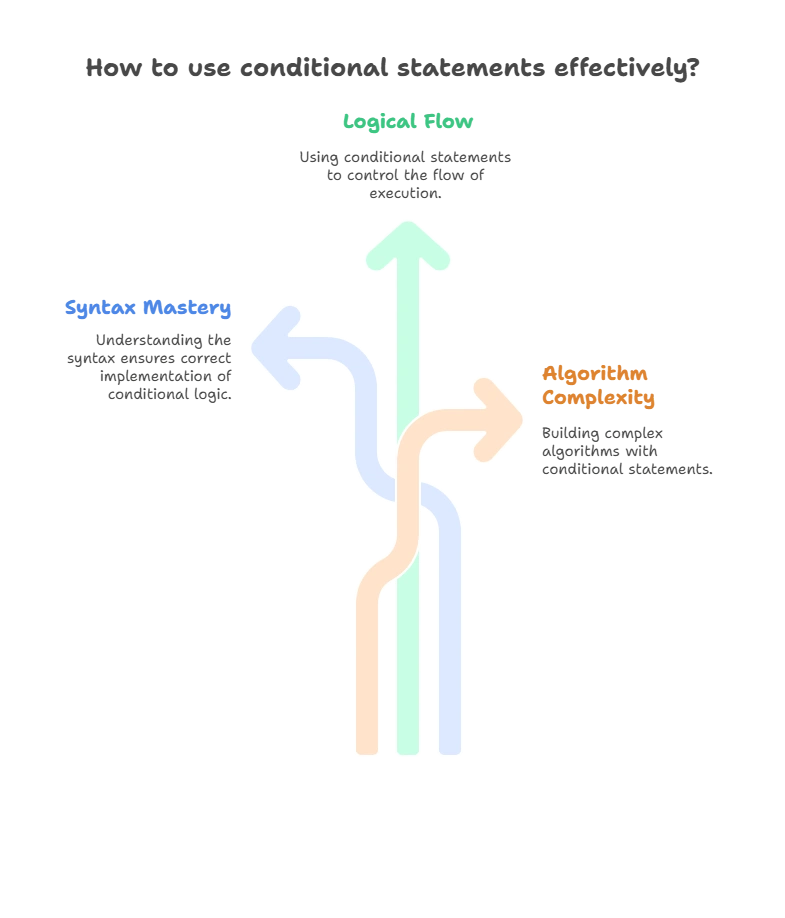Conditional Statements in Python
Conditional statements are essential in programming as they allow you to control the flow of your code based on certain conditions. In Python, conditional statements are primarily implemented using if, elif, and else statements. In this topic, we'll explore everything you need to know about conditional statements, from basic syntax to advanced techniques.
Basics of Conditional Statements

What are Conditional Statements?
Conditional statements are used to execute different blocks of code based on whether a certain condition evaluates to True or False.
Basic Syntax
The basic syntax of an if statement in Python is as follows:
if condition:
# Code block to execute if condition is True
Example
# Example of a basic if statement
x = 10
if x > 5:
print("x is greater than 5")
elif and else Statements
elif Statement
The elif statement allows you to check additional conditions if the previous conditions are not met.
if condition1:
# Code block to execute if condition1 is True
elif condition2:
# Code block to execute if condition2 is True
else Statement
The else statement is used to execute a block of code if none of the preceding conditions are met.
# Example of removing elements from a dictionary
del my_dict["city"] # Using del keyword
removed_age = my_dict.pop("age") # Using pop() method
print(removed_age)
print(my_dict)
Example
# Example of if-elif-else statement
x = 10
if x > 5:
print("x is greater than 5")
elif x == 5:
print("x is equal to 5")
else:
print("x is less than 5")
Advanced Techniques
Nested Conditional Statements
You can nest conditional statements within each other to handle more complex scenarios.
if condition1:
if condition2:
# Code block to execute if both condition1 and condition2 are True
else:
# Code block to execute if condition1 is True and condition2 is False
Short-circuit Evaluation
Python’s logical operators (and and or) use short-circuit evaluation, meaning they stop evaluating expressions as soon as the outcome is determined.
Ternary Operator
Python supports a ternary operator, which provides a concise way to write conditional expressions.
# Example of ternary operator
x = 10
result = "x is greater than 5" if x > 5 else "x is less than or equal to 5"
print(result)
Conditional statements are fundamental to programming as they allow you to make decisions and control the flow of your code. By understanding the basic syntax of if, elif, and else statements, as well as advanced techniques like nested conditionals, short-circuit evaluation, and the ternary operator, you can effectively handle various scenarios in your Python programs. Remember to choose the appropriate conditional structure based on the requirements of your code and practice using them to enhance your programming skills. Happy Coding!❤️
